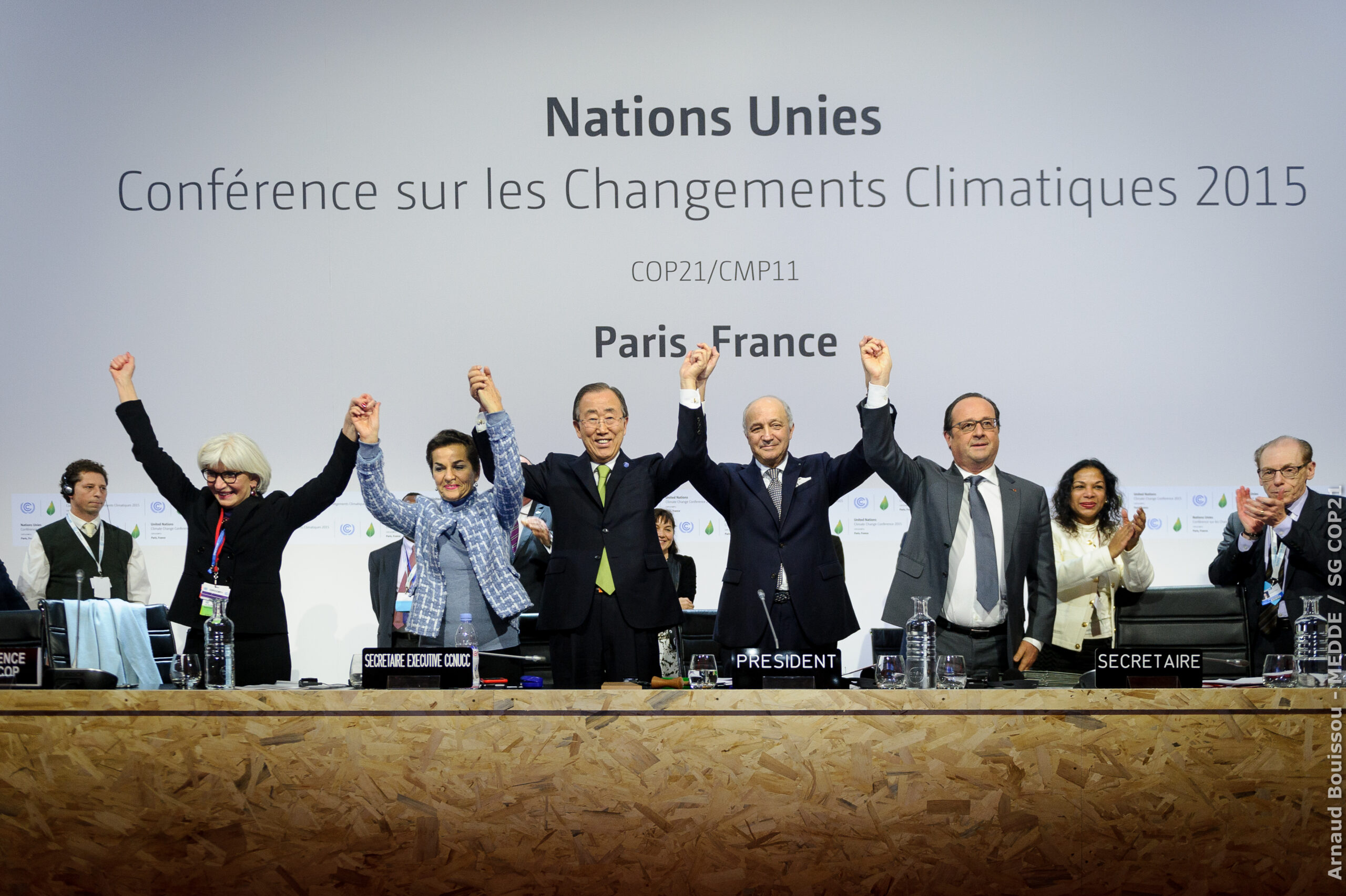Paris Climate Agreement
The Paris Agreement is an international contract that was undertaken by every nation in 2015 to address the ill effects of climate change and ways to address it. The agreement targets to reduce global carbon emissions to control the global temperature increase of more than 2 degrees Celsius – above the standard preindustrial levels. The contract includes all the major emitting countries to cut climate pollution. The agreement provides a solution to the nations in assisting and developing the mitigation of climate and contrary adaption effort – by creating guidelines that help to better monitor, report, and considers every nation’s individual and collective climate goals.
Countries involved in Paris Climate Agreement
Since 2015, nearly 197 countries have signed the Paris Agreement. Some of the major emitting countries that have not yet signed the agreement include Iran, Turkey, and Iraq.
France hosted the United Nations Climate Change Conference, one of the most important climate change meetings to have ever assembled. The objective was to draft a universal agreement that was designed to control the greenhouse gas emissions.
If the world hopes to control the temperature rise below 1.5 degrees celsius by 2100, it should aim to stop emitting greenhouse gases into the atmosphere by 2060. Even though currently, the forests and oceans serve as carbon sinks that absorb carbon dioxide from the atmosphere – the world is expected to deploy negative emissions technologies at scale, which would help to absorb and neutralize any carbon emissions.
Goals in the agreement that guide all nations
- Reducing the global greenhouse emissions and limiting the increase of the global emissions increase in the century to 2 degrees celsius while trying to keep it below a 1.5-degree increase.
- Checking the countries’ commitments every five years.
- Providing proper finance to developing countries in processing climate change. Strengthen the abilities to adapt to climate change impacts.
The agreement also mentions the targets of all the countries to reduce climate emissions and collectively work to take the climate change impacts and asks the countries to strengthen the commitments over time. The pathway is developed for the nations to foster climate mitigation and conclude the climate goals of different countries.
The Paris Agreement provides guidelines and direction to the collective efforts of the nation towards climate change. It is marked to be the shift towards a net-zero emission world. This would also need to adhere to attaining Sustainable Development Goals.
How does the Paris Agreement work?
The Paris Agreement is a five-year-old cycle of actions toward climate change carried out by different countries. Every five years, the countries are expected to submit in climate change plan called the Nationally Determined Contribution. The countries state the actions that help to control the greenhouse emissions to reach a goal of the Paris Agreement.
Why is it crucial for COP26?
Some of the key discussions in Glasgow will be regarding whether the countries are adhering to what was promised in Paris.
When it was signed, the representatives agreed that the actions would not limit global warming to 1.5C. All the countries have submitted new targets for emissions, but there are still many countries that have not yet improved their commitments and don’t have net zero targets in place.
The current pledges and obligations
- The wealthy nations have already failed to meet the 2010 commitment to provide at least $100 billion per year to finance developing countries by 2020. However, new pledges in COP26 aim to meet the target of $100 billion by 2023. The also includes $8 billion in annual funding for forests and other solutions.
- One of the aspects is to focus on the nature and representatives of the local communities
Governments will need to decide on their first regional carbon offset allocation, or their reductions in greenhouse gas emission objectives for 2025 or 2030, when they deliver their ratification tools. These initiatives will be listed in a public register that tracks emission reductions.
Parties will meet again in 2018 to evaluate their joint efforts. Reviewing the progress made in accomplishing the brief Paris Agreement objective of peaking pollution and achieving net-zero pollutants is the purpose of this affiliative discourse.
The Parties will either submit new mitigating measures or adjust their current contributions depending on how this facilitative discourse turns out.
The Paris Agreement is not the only factor in this query. The Fund is a form of investment that was approved at COP16 in Cancun in November 2010 and was formally introduced in 2011. (COP17).
By 2020 and through 2025, affluent nations have pledged to raise $100 billion (USD) yearly for developing nations, which will be transferred and distributed through the Green Climate Fund. Money should be used to develop technological and scientific capabilities, upgrade infrastructure, and promote information flow. Beginning in 2020, this fund will be operative.
There is a growing need to adopt a new set of Sustainable Development Goals that aim to “Transform the World”. Change comes with collective effort, mutual understanding and knowledge toward specific goals.
Despite the UN and other international organisations making crucial decisions, the result is far from expected. It made me wonder what it is that we are falling short on? Is it the lack of interest or lack of awareness?
That’s when I had a eureka moment, and it suddenly started to make all sense. Many people don’t know the complicated terms and references that are used when we talk about sustainability. The idea inspired me to create a new series called “The ABCs of Sustainability Development”. I hope that this series of blogs is well received and serves its purpose.





